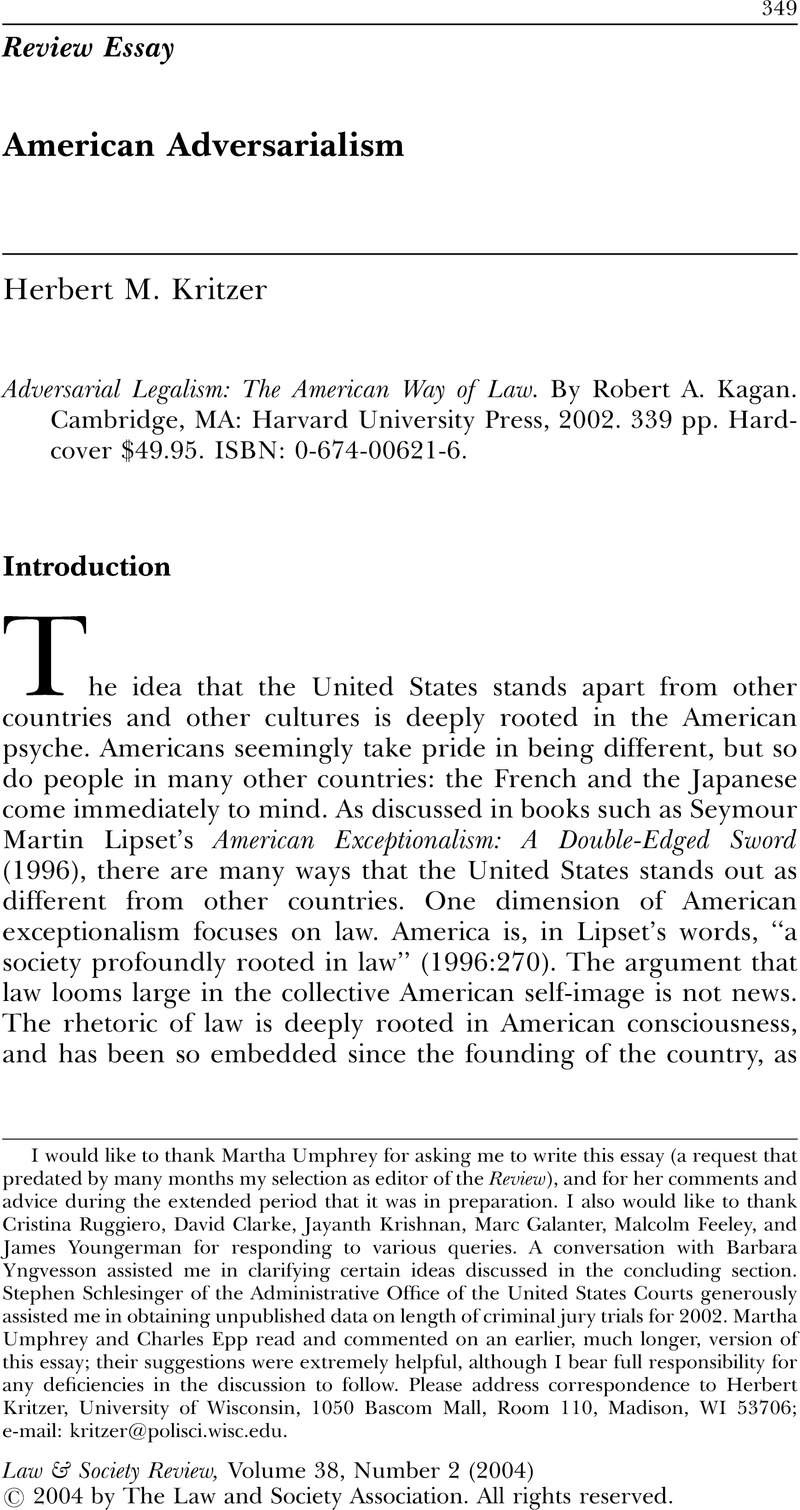Article contents
American Adversarialism
Review products
Published online by Cambridge University Press: 01 January 2024
Abstract

- Type
- Review Essay
- Information
- Copyright
- © 2004 Law and Society Association.
Footnotes
I would like to thank Martha Umphrey for asking me to write this essay (a request that predated by many months my selection as editor of the Review), and for her comments and advice during the extended period that it was in preparation. I also would like to thank Cristina Ruggiero, David Clarke, Jayanth Krishnan, Marc Galanter, Malcolm Feeley, and James Youngerman for responding to various queries. A conversation with Barbara Yngvesson assisted me in clarifying certain ideas discussed in the concluding section. Stephen Schlesinger of the Administrative Office of the United States Courts generously assisted me in obtaining unpublished data on length of criminal jury trials for 2002. Martha Umphrey and Charles Epp read and commented on an earlier, much longer, version of this essay; their suggestions were extremely helpful, although I bear full responsibility for any deficiencies in the discussion to follow.
References
References
Cases Cited
- 3
- Cited by


